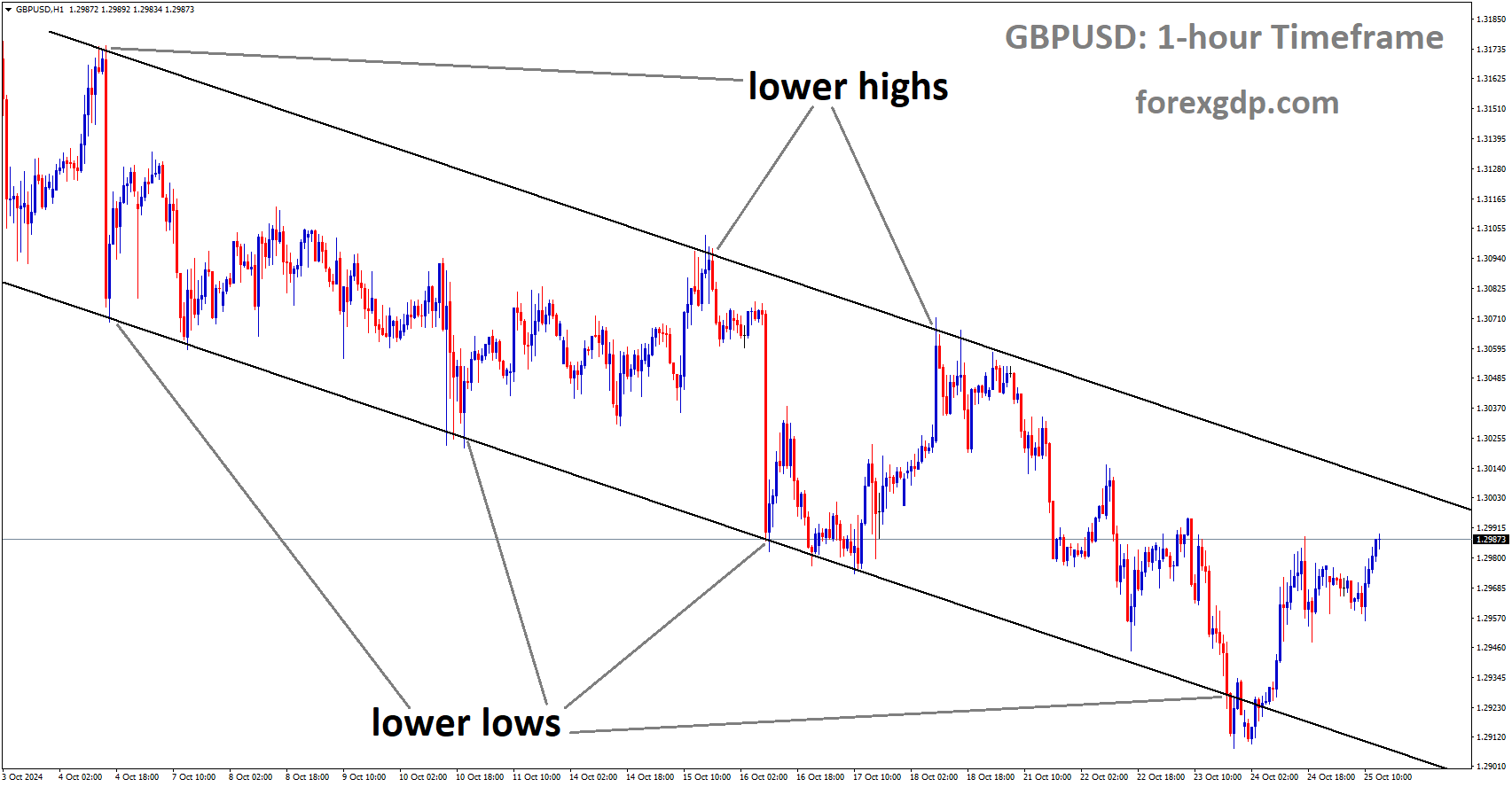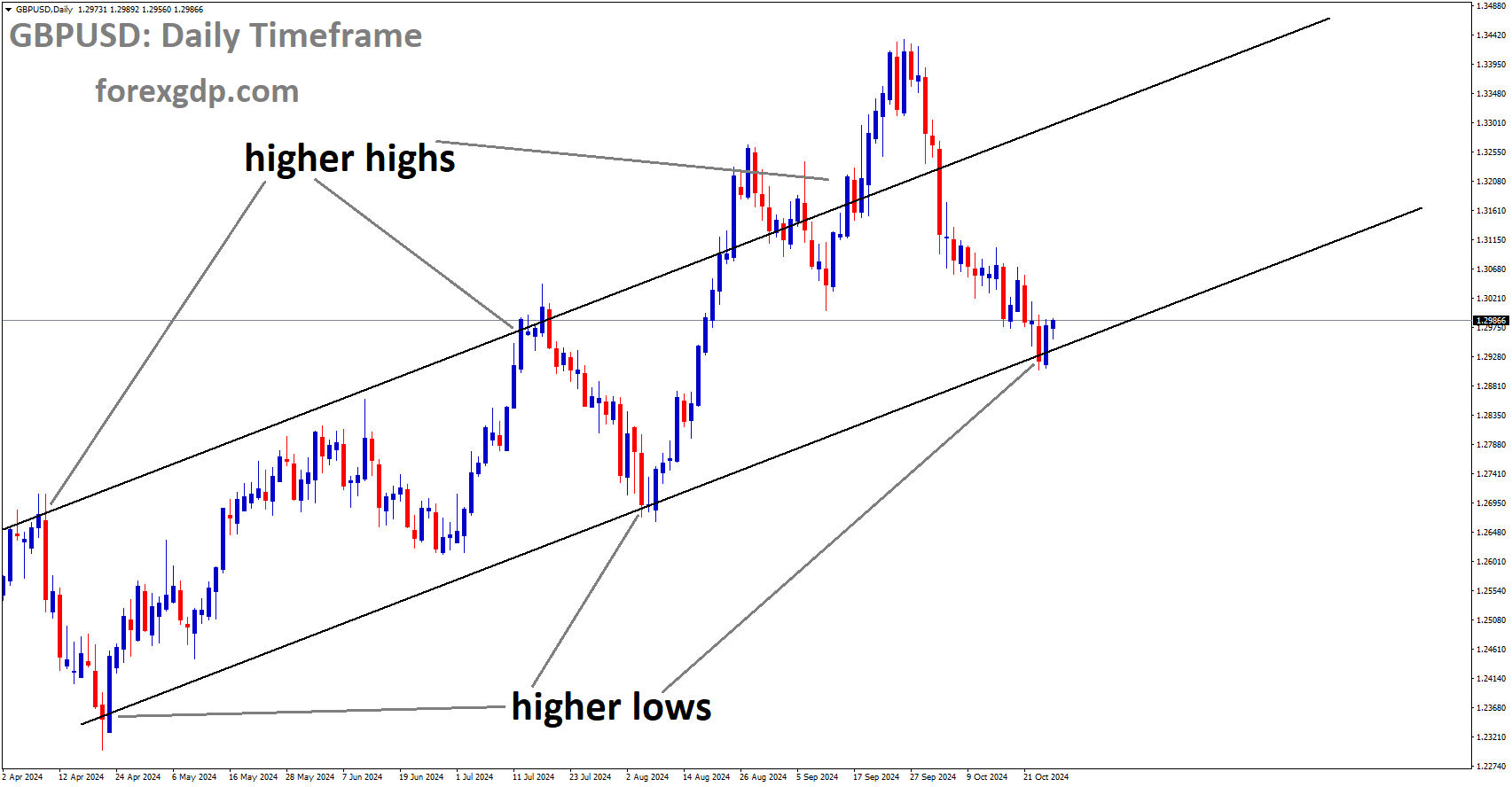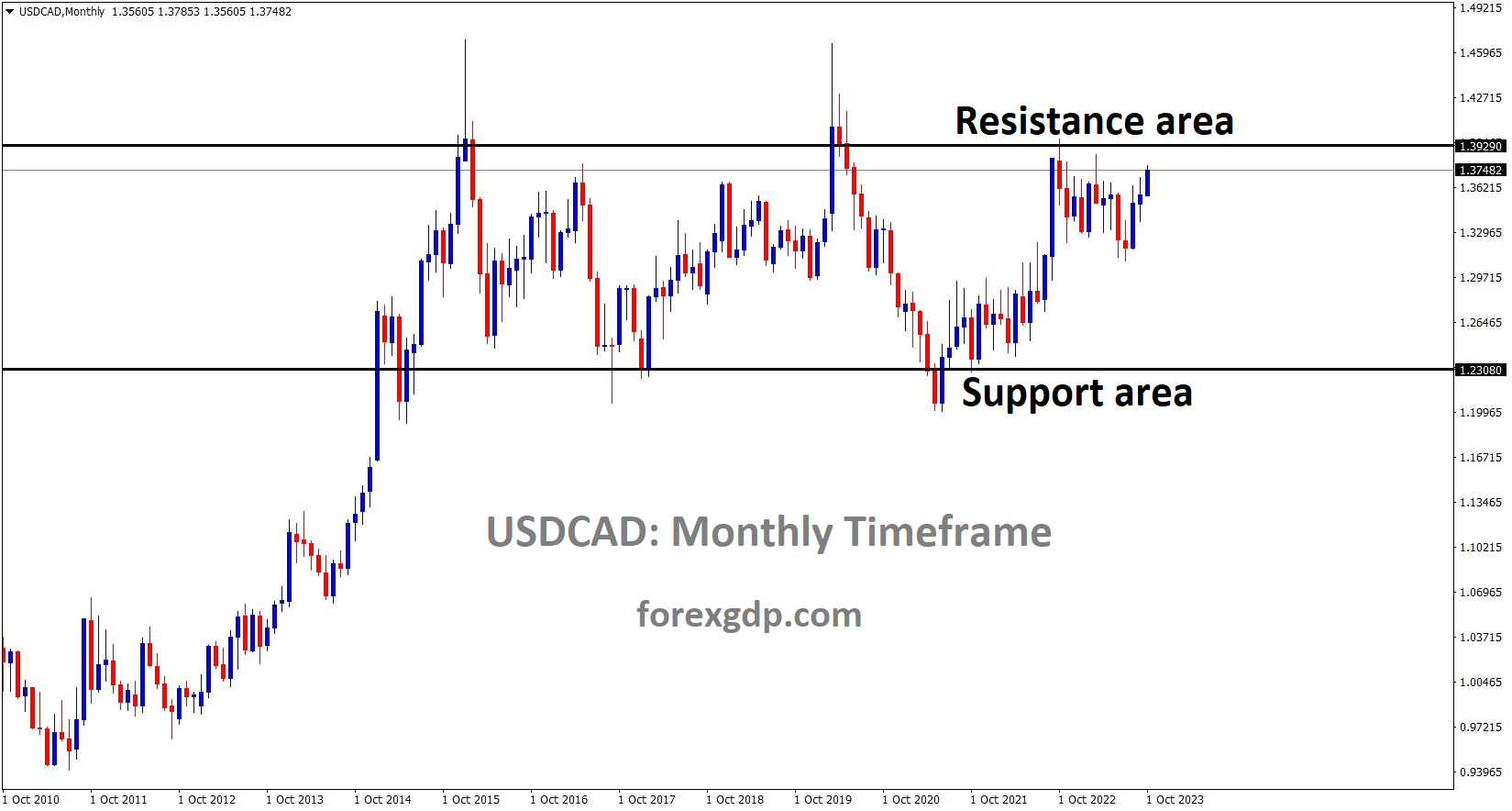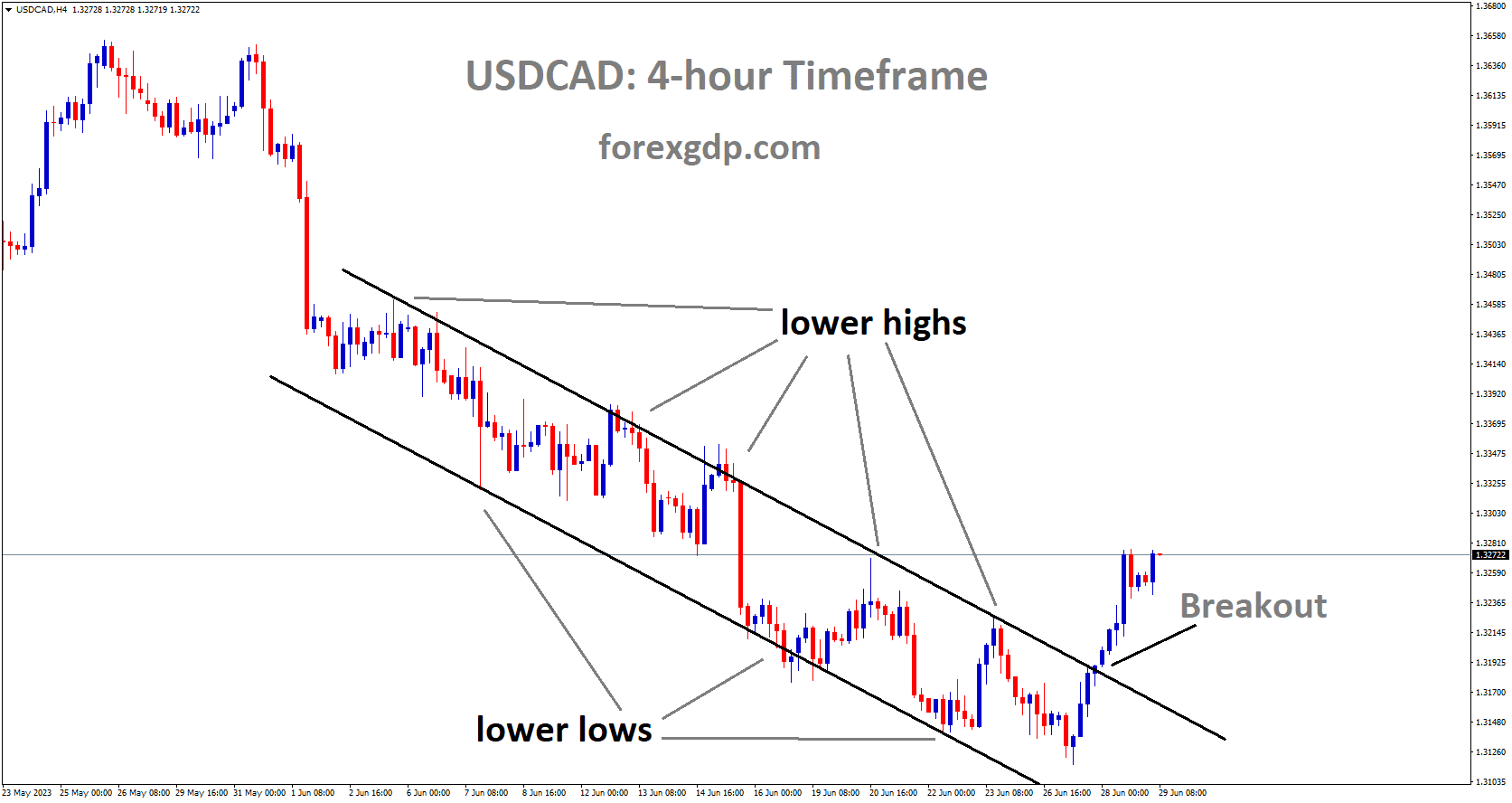GBPUSD is moving in a downtrend channel, and the market has rebounded from the lower low area of the channel
#GBPUSD Analysis Video
Pound Sterling Gains on Optimism Despite Economic Challenges
The British Pound Sterling (GBP) recently showed signs of recovery, bouncing back slightly after a string of losses. However, there’s more to the story than just a temporary uptick. Despite a challenging economic landscape, there’s growing optimism among traders, thanks to various factors like the hawkish remarks from the Bank of England (BoE) and positive economic reports, including the UK Purchasing Managers’ Index (PMI).
Let’s dive into the details of why the Pound Sterling might be on a stronger path and what factors are shaping its movements.
What’s Behind the Pound Sterling’s Latest Movements?
The Pound Sterling has been under pressure recently, struggling against major currencies like the US Dollar. Even though it’s held onto some gains from Thursday’s recovery, it still faces a significant challenge in bouncing back fully. Several key factors are influencing its movements, and understanding these is crucial to getting the full picture.
Hawkish Remarks from BoE’s Catherine Mann
One of the significant factors affecting the Pound’s movement was a panel discussion involving Catherine Mann, a prominent member of the BoE’s Monetary Policy Committee (MPC). Mann, known for her firm stance on inflation control, expressed cautious optimism regarding recent inflation data.
She pointed out that inflation in the UK had started to cool, particularly in the services sector, which is crucial for the overall economy. Despite this, Mann emphasized that inflation in the services sector still needs to decline further before the BoE could consider significant interest rate cuts. She stressed the need for more time, warning that cutting rates too soon might risk further inflationary pressures.
Mann’s statements, combined with a cautious approach from the BoE, have led traders to speculate on future interest rate policies. While there are still predictions of a rate cut in the near future, the timing and extent of these cuts remain uncertain. The BoE’s stance on inflation and interest rates is a critical factor influencing the Pound’s strength in the short to medium term.
UK Economy Showing Resilience Despite Challenges
Another critical piece of the puzzle is the state of the UK economy itself. According to the flash PMI report, the UK’s business activity continued to expand in October, although at a slower pace than in previous months. This PMI report, which measures the performance of the manufacturing and services sectors, showed growth in both areas.
While the growth rate wasn’t as high as expected, it still signaled a level of resilience in the UK economy. This is especially notable when compared to other major economies like the US and the Eurozone, where manufacturing output has been contracting. The continued expansion of the UK’s services and manufacturing sectors provides a positive backdrop for the Pound’s performance, giving traders some hope for its recovery.
US Political Uncertainty: How Does It Impact the Pound?
One of the major external factors influencing the British Pound’s movement is the political landscape in the United States. With the US presidential election on the horizon, traders are keeping a close eye on how this could affect currency markets.
GBPUSD is moving in a descending channel, and the market has fallen from the lower high area of the channel
There’s increasing speculation that Donald Trump could win the upcoming election. Many traders believe that a Trump victory could be positive for the US Dollar, mainly due to his policies around tariffs and taxes. A Trump administration could mean higher tariffs on goods from the UK and other trading partners, which might hurt those economies. However, this scenario is still speculative, and a win for Trump could have a ripple effect on the Pound Sterling.
If the current Vice President Kamala Harris were to win the election instead, there’s a belief that the US Dollar might face a correction. Such political uncertainties in the US create volatility in global currency markets, and the Pound is no exception. The next few months could see significant movements depending on how the US election plays out.
The Federal Reserve’s Influence on the US Dollar and the Pound
Another factor to consider is the monetary policy of the US Federal Reserve. There’s firm speculation that the Fed will continue with a gradual path of interest rate cuts. Many traders expect that the Fed will cut interest rates by 25 basis points in both November and December.
While these cuts might soften the US Dollar slightly, they are unlikely to lead to a major devaluation. However, if the Fed surprises the market with deeper or faster cuts, we could see the US Dollar weaken more significantly. This would, in turn, have implications for the GBP/USD pair, as a weaker Dollar could give the Pound some breathing room to recover.
Key Factors to Watch in the Coming Days
So, where does that leave us? The Pound Sterling’s movement will likely depend on several key factors in the coming days and weeks.
1. BoE’s Next Move on Interest Rates
The BoE’s policy on interest rates will remain a critical factor. With inflation still above the bank’s target, it’s clear that the BoE is cautious about cutting rates too soon. If inflation continues to drop, we might see the BoE move forward with rate cuts, but the timeline is uncertain. Traders and investors will be watching the BoE’s decisions closely, as they could have a significant impact on the Pound.
GBPUSD is moving in an Ascending channel, and the market has reached the higher low area of the channel
2. UK Economic Data
Economic reports, particularly from the services and manufacturing sectors, will continue to influence the Pound’s performance. Any signs of slowing growth could weigh on the currency, while stronger-than-expected data could help the Pound recover further.
3. US Political Developments
With the US election looming, political developments in the United States will have a considerable influence on currency markets. If Donald Trump pulls ahead in the polls, we could see the US Dollar strengthen, putting additional pressure on the Pound. On the other hand, a victory for Kamala Harris could lead to some softening in the US Dollar, giving the Pound a chance to rebound.
4. Global Market Sentiment
Finally, broader market sentiment and risk appetite will also play a role. If global investors become more risk-averse, we could see the Pound struggle. On the other hand, if risk appetite improves, the Pound could benefit from a more favorable trading environment.
Wrapping It Up: What to Expect Next for the Pound Sterling
To sum it all up, the Pound Sterling is at an interesting juncture. While it has shown some recovery in recent days, it still faces significant headwinds. Hawkish remarks from the BoE, coupled with ongoing political uncertainty in the US, are likely to keep traders on edge.
However, there are reasons for optimism. The UK economy, while not growing at a breakneck pace, is still expanding, and the BoE is closely monitoring inflation. As long as economic data remains positive and the BoE manages inflation carefully, the Pound could find some stability in the coming weeks.
At the same time, traders need to keep a close watch on global events, particularly the US election and the Fed’s policy moves. These external factors could create volatility in the market and influence the Pound’s performance in unexpected ways.
In the end, while the Pound Sterling may not be out of the woods just yet, there are enough positive signs to suggest that it could weather the storm and come out stronger in the months ahead.
Don’t trade all the time, trade forex only at the confirmed trade setups
Get more confirmed trade signals at premium or supreme – Click here to get more signals, 2200%, 800% growth in Real Live USD trading account of our users – click here to see , or If you want to get FREE Trial signals, You can Join FREE Signals Now!









